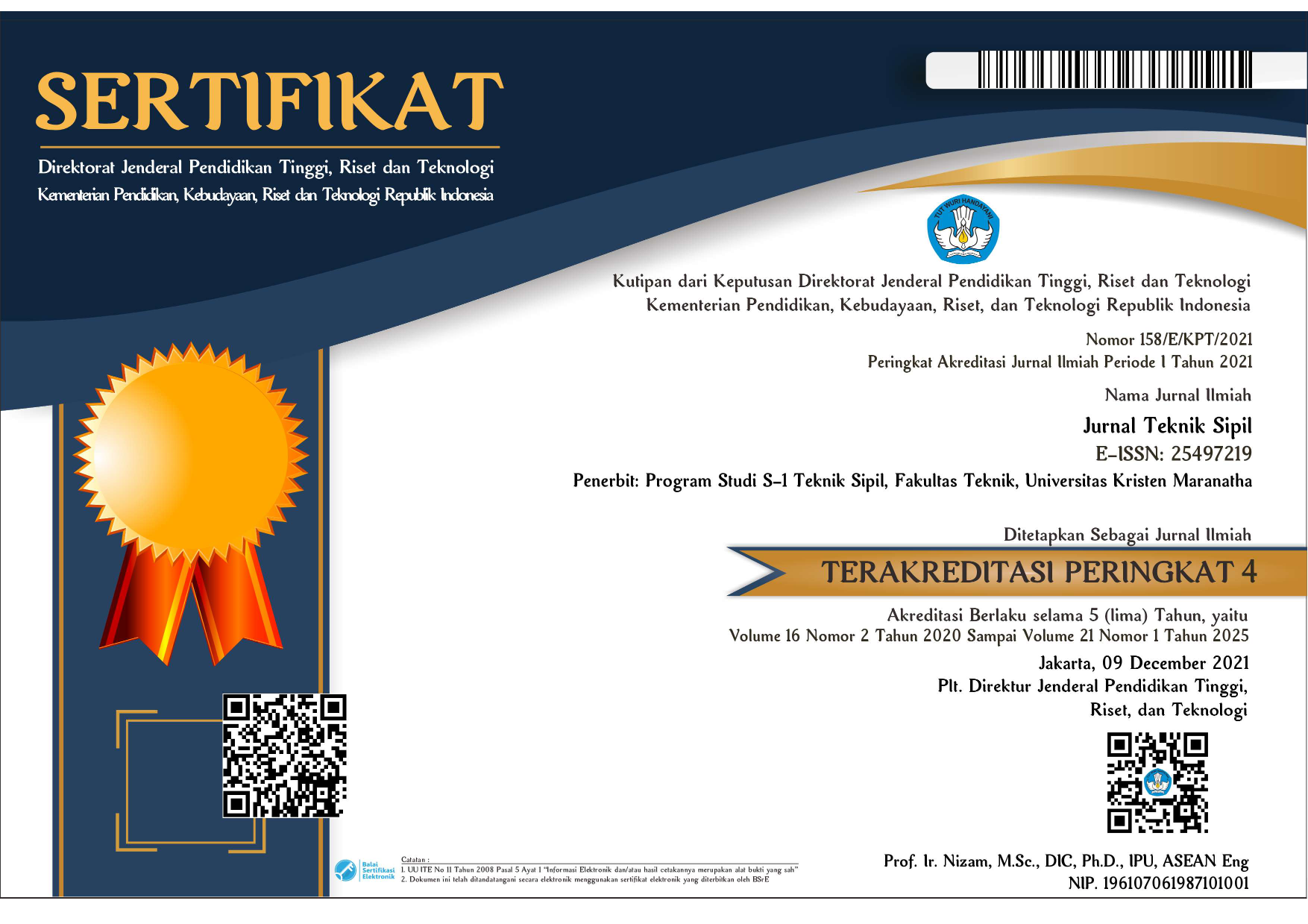ANALYSIS OF THE LIQUEFACTION POTENTIAL OF PALU CITY USING QUALITATIVE AND QAUNTITATIVE METHODS
DOI:
https://doi.org/10.28932/jts.v18i1.4526Keywords:
Earthquakes, Liquefaction, Simplified Seed, Qualitative, QuantitativeAbstract
In 2018, there was an earthquake measuring 7.7 on the Richter scale that shook the city of Palu, Central Sulawesi. The epicenter was 26 km north of Donggala Regency and 80 km northwest of Palu City. The earthquake caused the land of the location to become saturated and experience liquefaction. This research aims to find out how much potential liquefaction will occur in an area using qualitative methods and quantitative methods. After conducting qualitative analysis consisting of historical, geological, and soil composition criteria the results are still potential liquefaction, with these results, the research continued with quantitative analysis with Simplified Seed method by Idriss Boulanger (2010) with data on 3 boring log samples in the area. Based on the results reviewed using qualitative analysis, the data of 3 boring samples has the potential to occur liquefaction, so it continues with quantitative analysis to support the results of qualitative analysis. From the results of calculations using the largest magnitude value ever occurred, which is 7.7 SR with the result of Safety Factor value < 1. At points SB01, SB02, and SB03 have Safety Factor values of 0.184 – 0.992.Downloads
Download data is not yet available.
Downloads
Published
2022-04-01 — Updated on 2022-04-10
Versions
- 2022-04-10 (2)
- 2022-04-01 (1)
How to Cite
Pratama, R. J. A., Krisnamurti, & Wicaksono, L. A. (2022). ANALYSIS OF THE LIQUEFACTION POTENTIAL OF PALU CITY USING QUALITATIVE AND QAUNTITATIVE METHODS . Jurnal Teknik Sipil, 18(1), 140–151. https://doi.org/10.28932/jts.v18i1.4526 (Original work published April 1, 2022)
Issue
Section
Articles


















